By Angela Lurie | Senior Regional Vice President, Robert Half
Mentorships engage employees in ways no other professional development initiative can. A mentor helping a new employee navigate her career in a one-on-one setting gives the mentor the chance to share her own experiences and lessons learned, all while teaching the mentee to make wise decisions and take ownership of her work. Likewise, a younger employee mentoring a more experienced coworker (referred to as reverse mentorships) in areas such as new technology can bring diverse generations together in the workplace. Recent research from Robert Half indicates that the greatest benefits of serving as a mentor are the opportunity to improve leadership skills and the internal satisfaction of helping others.
Other tactical benefits to mentorships include:
Benefits to the Mentor:
- Improved interpersonal skills
- Expanded professional network
- Facilitated upkeep with industry trends
Benefits to the Mentee:
- Improved interpersonal skills
- Development of leadership skills
- Achievement of goals and objectives
- Personal resource in maneuvering new professional experiences
Benefits to the Company:
- Increased knowledge transfer between employees
- Furthered succession planning efforts
- Employees motivated to pursue more professional development
- Increased teamwork, including across departments
- Improved employee retention
So how can you bring these benefits to your team? First, it’s important to choose your mentee carefully. It is not as simple as finding a junior member of your team and offering advice. While most traditional mentorship relationships involve a senior employee mentoring someone less experienced, it may make more sense to seek out a reverse or peer mentorship. The key is to consider who will benefit from your insights and guidance, based on their professional interests and long-term goals. Keep in mind that the right mentee may not even work in your department. Ask your colleagues for recommendations.
Another important consideration is the commitment required to make the experience positive and productive. The best way to accomplish this is to plan ahead. Schedule regular mentorship time, whether it’s a monthly lunch or standing coffee date. This commitment goes both ways, so work with your mentee to hold each other accountable. This accountability should extend beyond maintaining a meeting schedule to include following up on advice and goals.
Finally, to keep an eye on the progress of goals, it’s important to set them up front. What does your mentee hope to learn from you? What knowledge, skills and advice can you offer her? How will you measure success over time?
Mentorships are an excellent way to empower mentor and mentee alike. Learn more at the April 25 TeamWomenMN networking event, “Mentoring: What You Learn By Empowering Someone.”
To learn more about Angela’s own mentorship experiences, check out the April 25 TeamWomenMN networking event, “Mentoring: What You Learn By Empowering Someone.” Angela and three additional panelists will share their own insights and offer recommendations for embarking on your own mentorship relationship.

